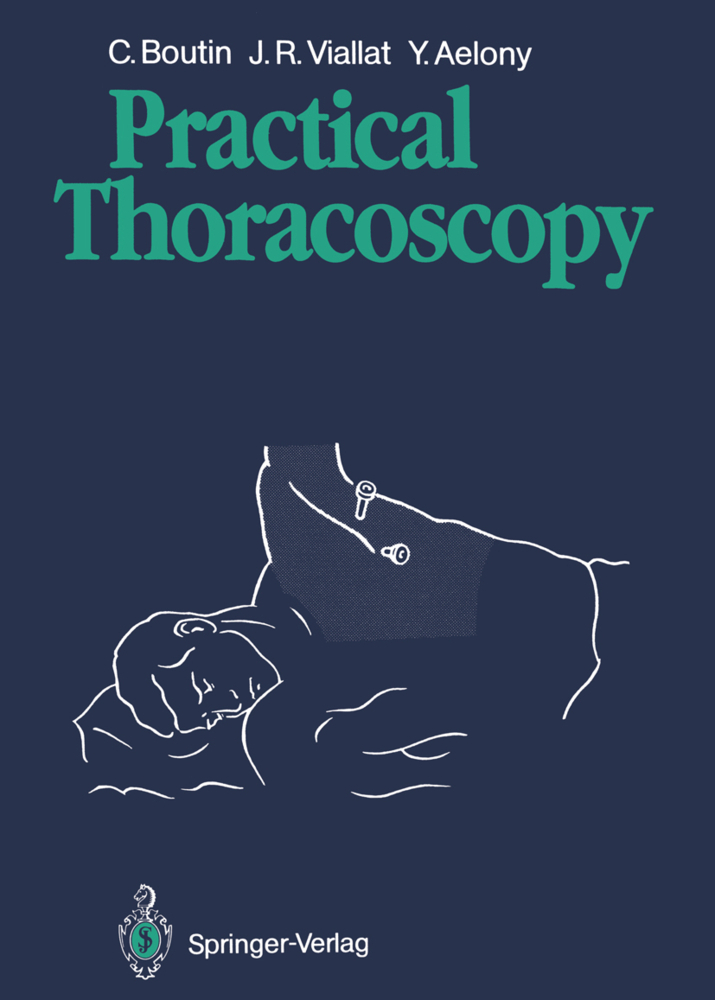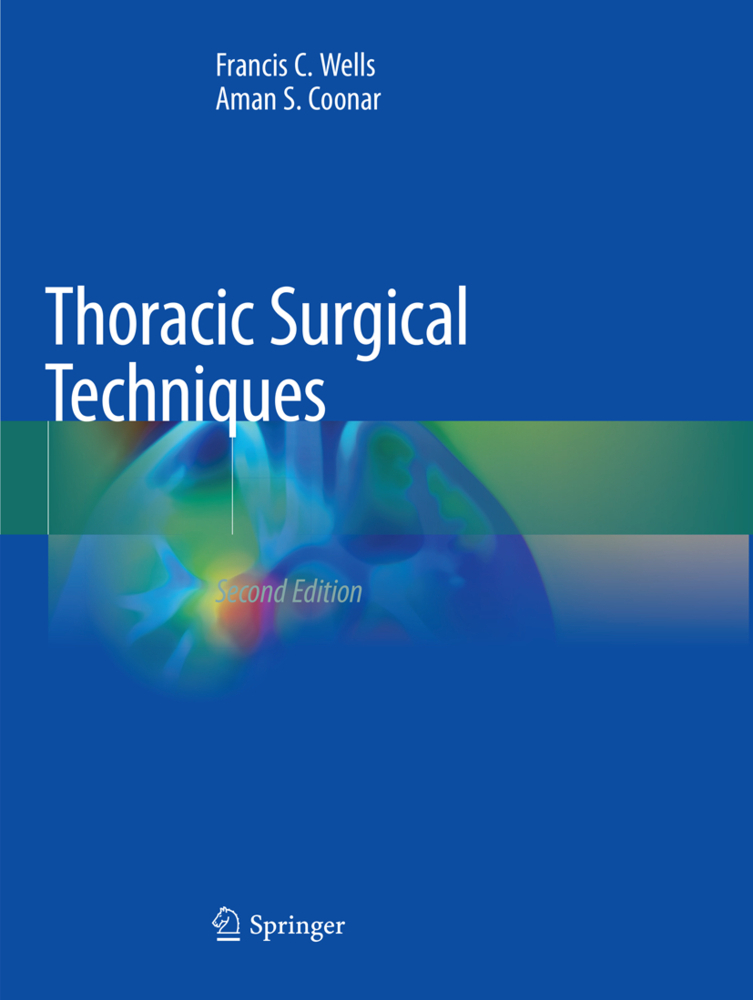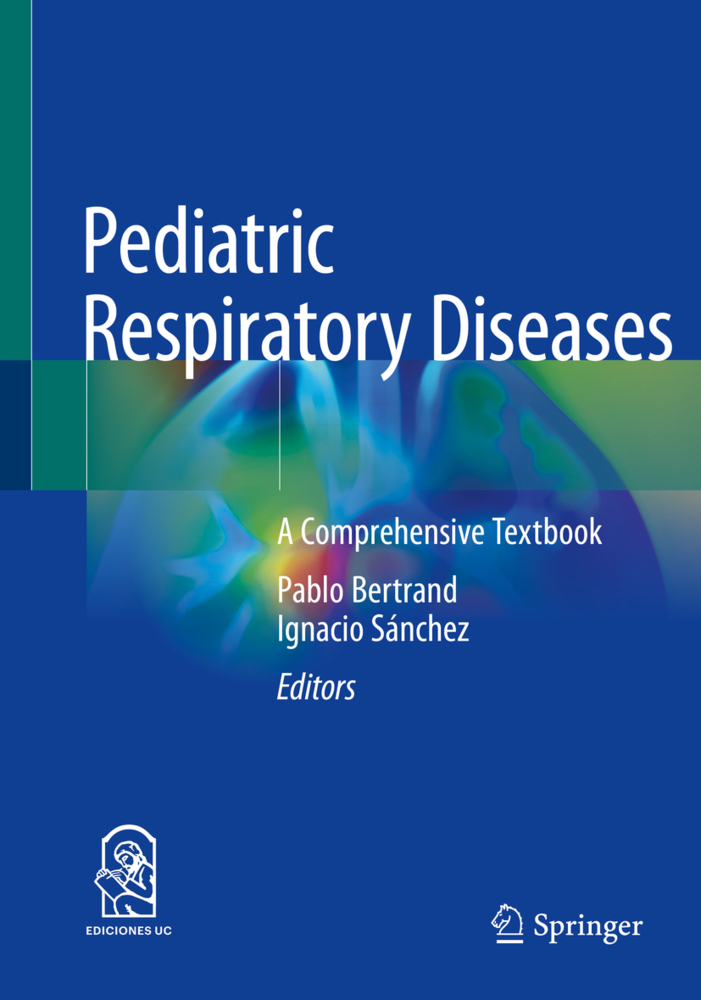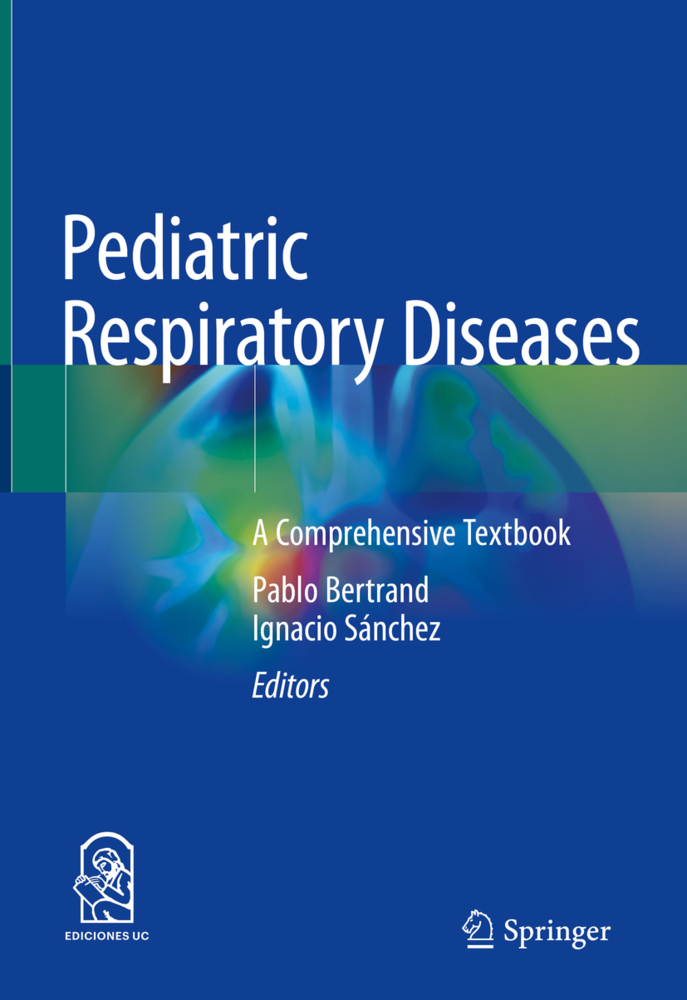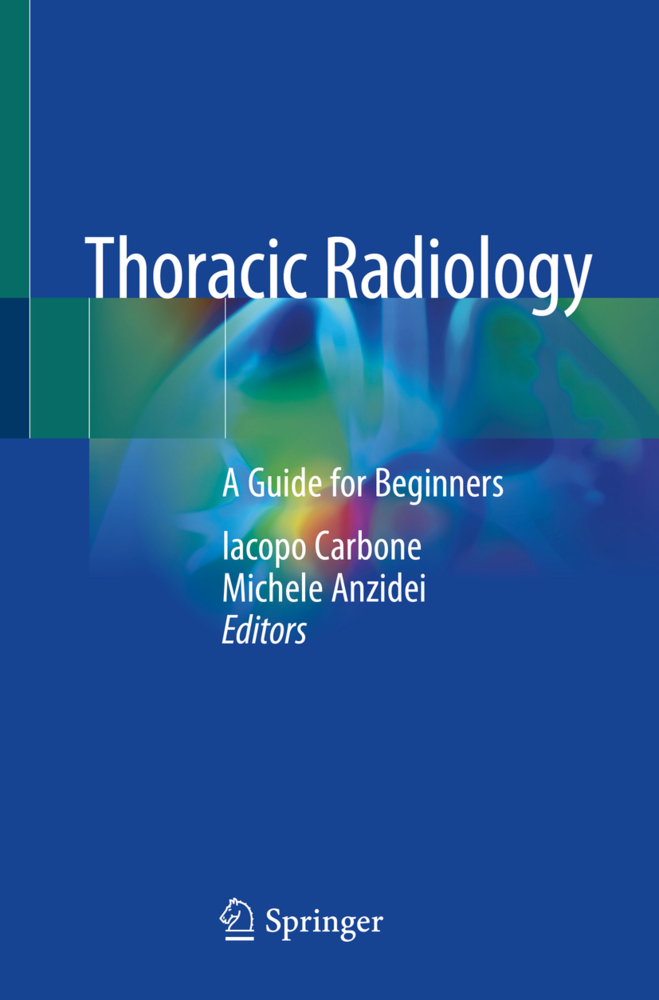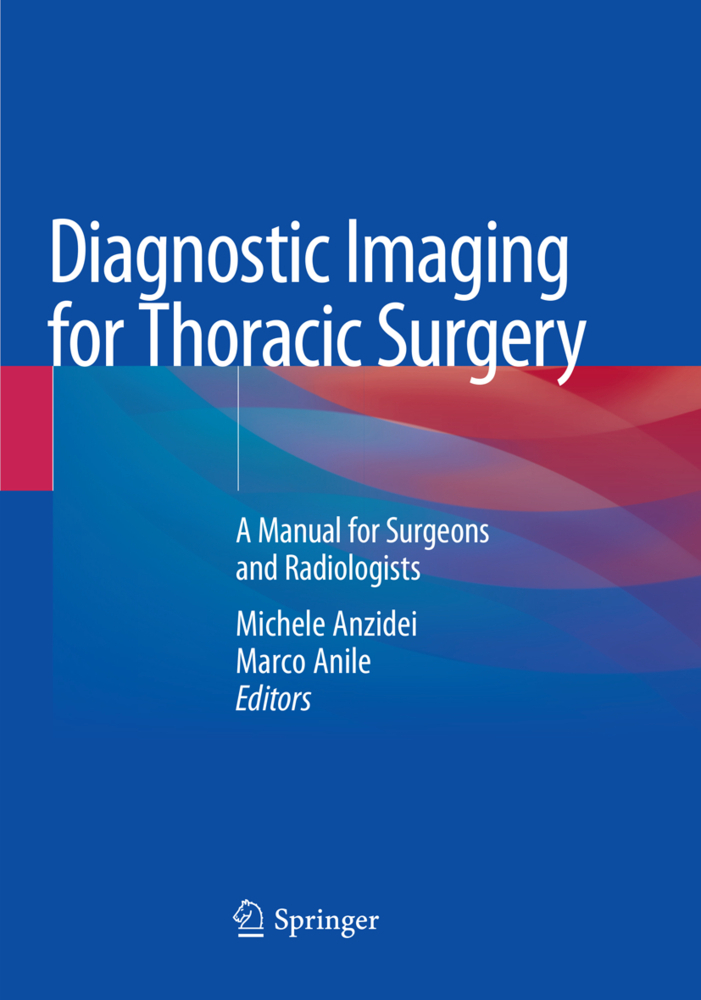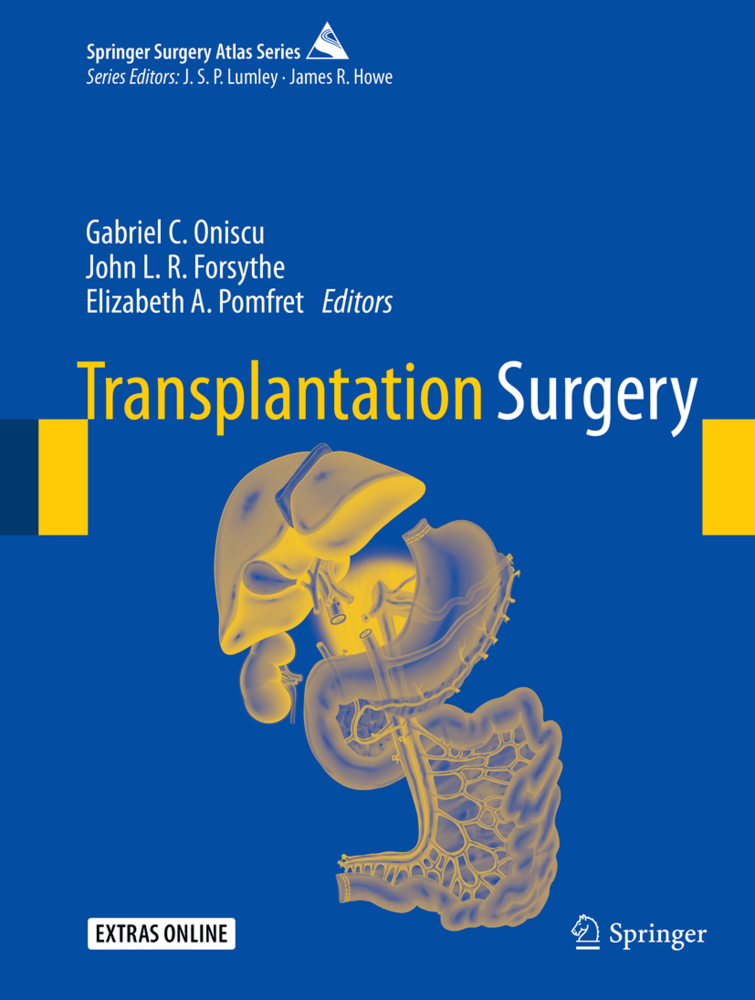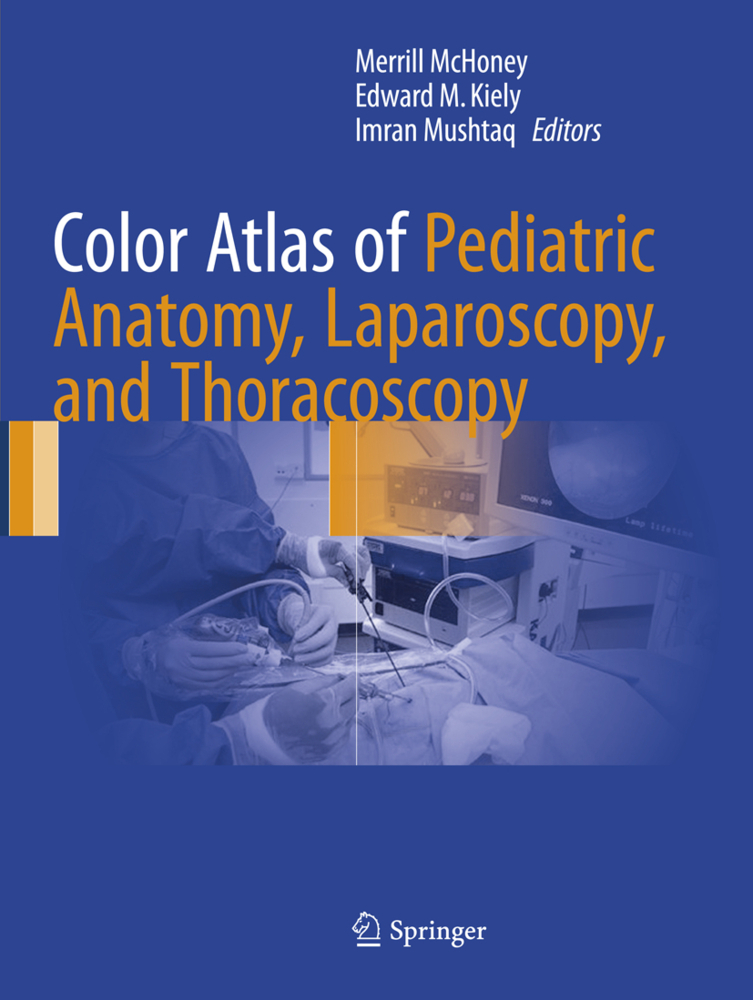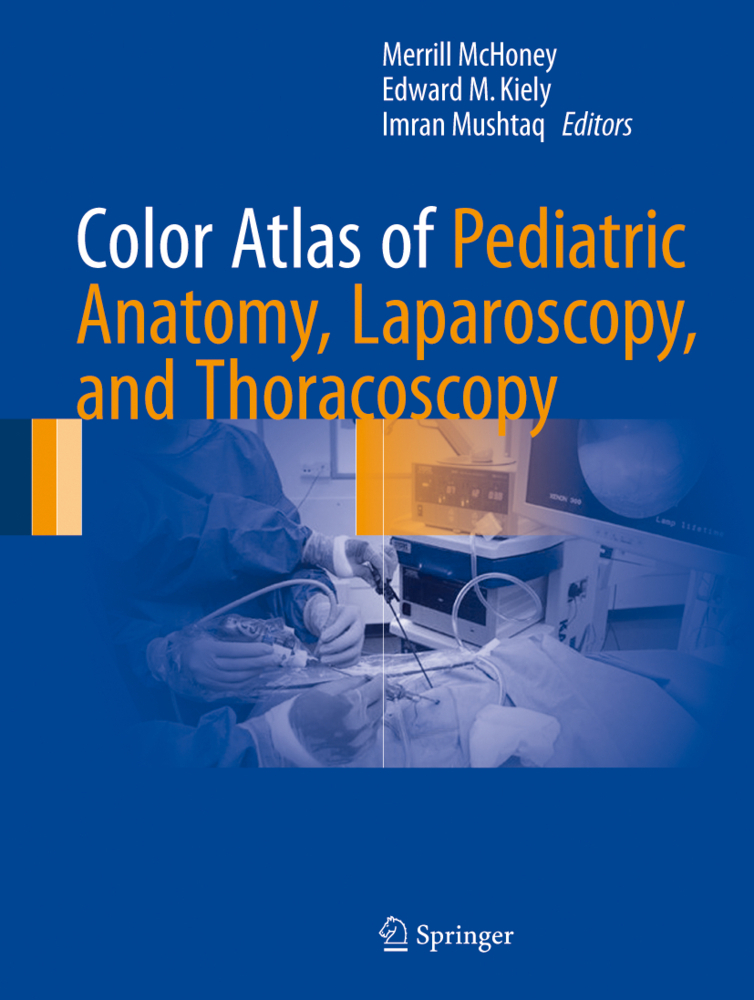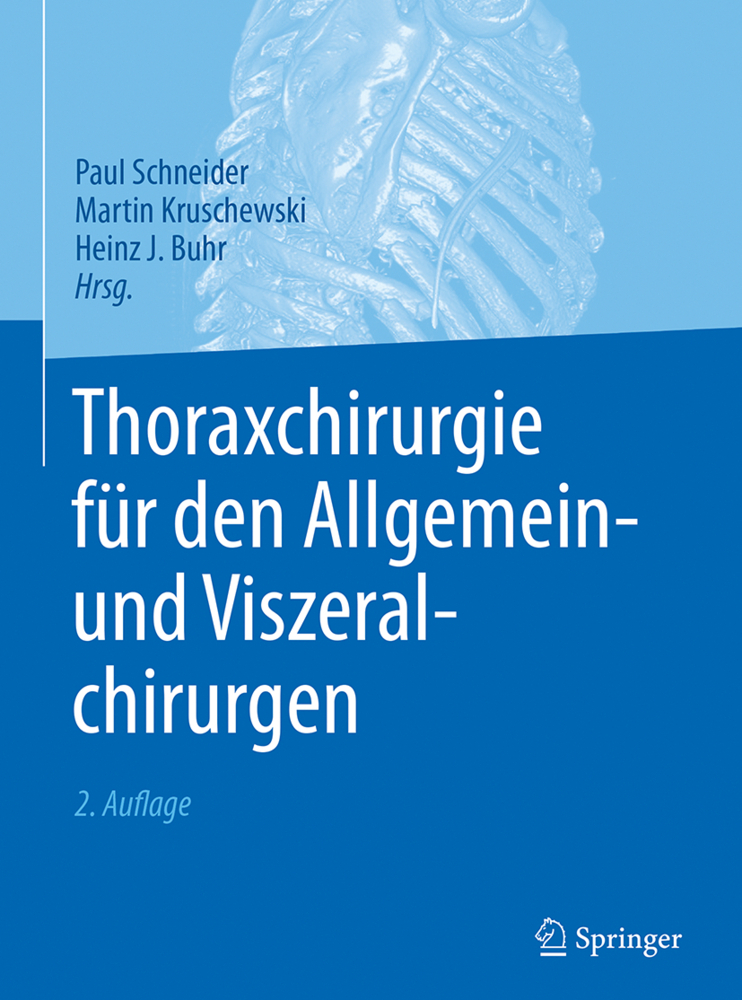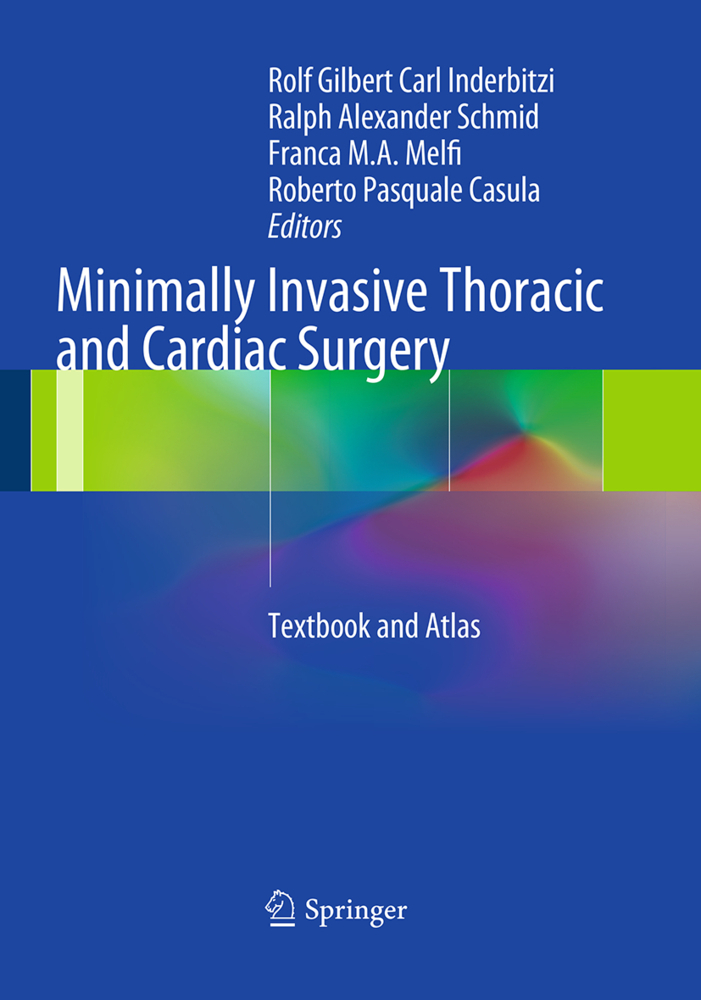Practical Thoracoscopy
Practical Thoracoscopy
Diseases of the pleura such as effusion, thickening, or pneumothorax are frequently encountered in the practice of medicine. Practical Thoracoscopy presents an encyclopedic approach to the use of thoracoscopy in the diag nosis and treatment of patients with pleural disease. After an initial chapter on the history of thoracoscopy, the next three chapters of the book are devoted to the general technique of performing thoracoscopy, a topic on which the team of Dr. Boutin and his colleagues write with ample experience. In these chapters they provide detailed de scriptions of how to perform the procedure and discuss the pros and the cons of the different approaches and the different equipment available. The following chapter discusses the complications of the procedure. The next chapter discusses the role of thoracoscopy in diagnosing pleu ral effusions. My own opinion here is in general that, as long as well trained personnel are available, thoracoscopy is preferable to open pleural biopsy, because it is associated with less morbidity and mortality and can be done if necessary under local anesthesia. The following chapter is directed at using to thoracoscopy to facilitate pleurodesis for chronic pleural effusions. With Boutin's method, talc pou drage is performed during thoracoscopy, and certainly, if a thoracoscopy is used to establish the diagnosis of a malignant pleural effusion, it is appro priate to attempt to induce a pleurodesis with talc at the time of the diag nostic procedure.
2.1 The Thoracoscope
2.2 Auxiliary Instruments and Accessories
2.3 Endoscopic Photography
2.4 The Endoscopy Room
2.5 Aseptic Conditions
3: Thoracoscopy Technique
3.1 Induced Pneumothorax
3.2 Selecting the Point of Entry
3.3 Anesthesia
3.4 Position of the Patient
3.5 Thoracoscopy Using a Single Point of Entry
3.6 Endoscopic Anatomy
3.7 Pleural Biopsy Technique
3.8 Number of Biopsies
3.9 The Second Point of Entry
3.10 Dividing Adhesions (Pneumonolysis)
3.11 The Pulmonary Biopsy Technique
3.12 The Rest of the Examination
3.13 Positioning the Chest Tube for Pleural Drainage
3.14 The YAG Laser Option
3.15 Conclusion
4: Thoracoscopic Sequelae: Side Effects, Complications, Prevention
4.1 Morbidity
4.2 Practical Preventive Measures
4.3 Pleural Drainage Technique
4.4 Temperature Curve After Thoracoscopy
5: Diagnostic Thoracoscopy for Pleural Effusions
5.1 Indications
5.2 Metastatic Pleural Malignancies
5.3 Diffuse Malignant Mesothelioma
5.4 Tuberculous Pleural Effusions
5.5 Miscellaneous Causes of Chronic Pleurisy
6: Pleurodesis for Chronic Pleural Effusion
6.1 Which Types of Pleurisy Require Pleurodesis?
6.2 Is Drainage of the Effusion a Necessity?
6.3 Deloculation of the Pleural Fluid is Often Useful
6.4 Sclerosing Agents
6.5 Newer Agents for Pleurodesis, Including Bioadhesives
6.6 Conclusion
7: Thoracoscopy in the Diagnosis and Treatment of Spontaneous Pneumothorax
7.1 Indications for Thoracoscopy
7.2 Thoracoscopic Findings in Spontaneous Pneumothorax
7.3 Results of Induced Pleurodesis in Spontaneous Pneumothorax
7.4 Conclusion
8: Other Indications for Thoracoscopy
8.1 Pulmonary Biopsy
8.2 Empyema
8.3 Diverse Indications
References.
1: History and Evolution of the Technique
2: Equipment2.1 The Thoracoscope
2.2 Auxiliary Instruments and Accessories
2.3 Endoscopic Photography
2.4 The Endoscopy Room
2.5 Aseptic Conditions
3: Thoracoscopy Technique
3.1 Induced Pneumothorax
3.2 Selecting the Point of Entry
3.3 Anesthesia
3.4 Position of the Patient
3.5 Thoracoscopy Using a Single Point of Entry
3.6 Endoscopic Anatomy
3.7 Pleural Biopsy Technique
3.8 Number of Biopsies
3.9 The Second Point of Entry
3.10 Dividing Adhesions (Pneumonolysis)
3.11 The Pulmonary Biopsy Technique
3.12 The Rest of the Examination
3.13 Positioning the Chest Tube for Pleural Drainage
3.14 The YAG Laser Option
3.15 Conclusion
4: Thoracoscopic Sequelae: Side Effects, Complications, Prevention
4.1 Morbidity
4.2 Practical Preventive Measures
4.3 Pleural Drainage Technique
4.4 Temperature Curve After Thoracoscopy
5: Diagnostic Thoracoscopy for Pleural Effusions
5.1 Indications
5.2 Metastatic Pleural Malignancies
5.3 Diffuse Malignant Mesothelioma
5.4 Tuberculous Pleural Effusions
5.5 Miscellaneous Causes of Chronic Pleurisy
6: Pleurodesis for Chronic Pleural Effusion
6.1 Which Types of Pleurisy Require Pleurodesis?
6.2 Is Drainage of the Effusion a Necessity?
6.3 Deloculation of the Pleural Fluid is Often Useful
6.4 Sclerosing Agents
6.5 Newer Agents for Pleurodesis, Including Bioadhesives
6.6 Conclusion
7: Thoracoscopy in the Diagnosis and Treatment of Spontaneous Pneumothorax
7.1 Indications for Thoracoscopy
7.2 Thoracoscopic Findings in Spontaneous Pneumothorax
7.3 Results of Induced Pleurodesis in Spontaneous Pneumothorax
7.4 Conclusion
8: Other Indications for Thoracoscopy
8.1 Pulmonary Biopsy
8.2 Empyema
8.3 Diverse Indications
References.
Boutin, Christian
Viallat, Jean R.
Aelony, Yossef
Rey, F.
Light, R. W.
| ISBN | 978-3-642-75560-6 |
|---|---|
| Artikelnummer | 9783642755606 |
| Medientyp | Buch |
| Auflage | Softcover reprint of the original 1st ed. 1991 |
| Copyrightjahr | 2011 |
| Verlag | Springer, Berlin |
| Umfang | XI, 107 Seiten |
| Abbildungen | XI, 107 p. 17 illus. |
| Sprache | Englisch |

